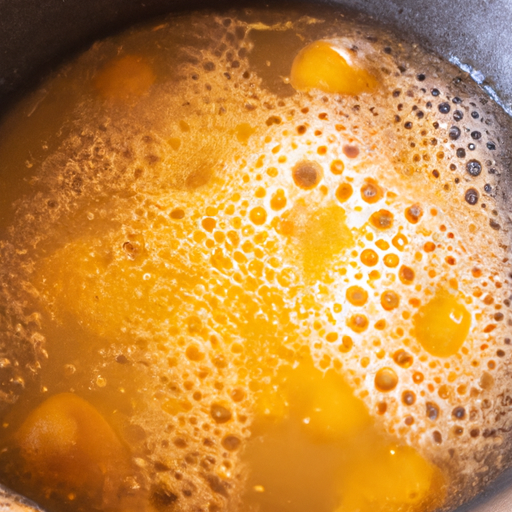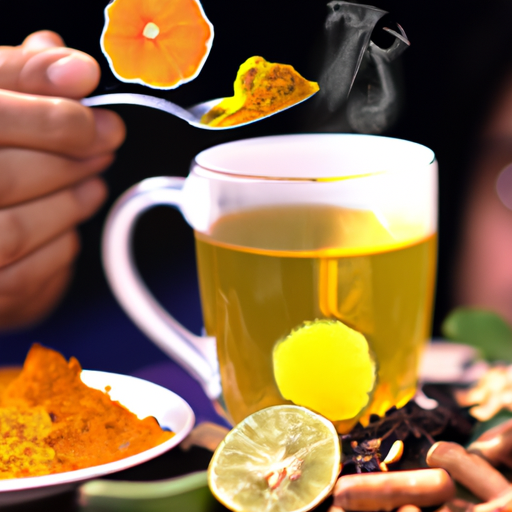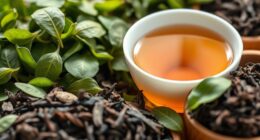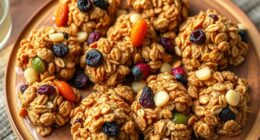As a breastfeeding mother, I am constantly seeking ways to enhance the nutritional value of my breast milk for the optimal growth and development of my baby.
Recently, I came across an intriguing question: can turmeric change breast milk color? This question piqued my curiosity and led me down a path of research to uncover the truth.
In this article, we will explore the composition and color of breast milk, as well as the potential effects of turmeric on breast milk. We will delve into scientific studies that have examined the relationship between turmeric and breast milk color.
Additionally, we will discuss any potential concerns or side effects associated with consuming turmeric while breastfeeding.
Furthermore, we will explore the benefits of consuming turmeric during breastfeeding and provide recommendations for breastfeeding mothers who are considering incorporating this spice into their diet.
Join me on this evidence-based journey as we uncover the potential impact of turmeric on breast milk color and its implications for breastfeeding mothers and their babies.
Key Takeaways
- Turmeric contains curcumin, a powerful antioxidant that passes into breast milk in small amounts.
- Limited research suggests that consuming turmeric may increase antioxidant activity in breast milk.
- Anecdotal reports of turmeric turning breast milk yellow/orange are not supported by scientific research.
- Consuming turmeric during breastfeeding can enhance the quality of breast milk, reduce inflammation, and aid digestion for both mother and baby.
The Composition and Color of Breast Milk
You may be interested to know that the composition and color of breast milk can vary depending on various factors.
Breast milk is a complex fluid that provides all the necessary nutrients and immune factors for a baby’s growth and development. Its composition includes carbohydrates, proteins, fats, vitamins, minerals, and antibodies, which can vary in their concentrations.
The color of breast milk can range from white to yellowish or even slightly blue, depending on the mother’s diet and hydration levels. Interestingly, some foods or substances consumed by the mother can also temporarily change the color of breast milk.
This brings us to the next section, where we will explore what turmeric is and whether it can change the color of breast milk.
What is Turmeric?
Take a moment to consider how adding this vibrant spice to your meals can significantly enhance both the taste and nutritional value of your favorite dishes. Turmeric, a golden-yellow spice commonly used in Indian cuisine, isn’t just delicious but also packed with health benefits. Here are a few reasons why you should consider incorporating turmeric into your diet:
- Turmeric contains curcumin, a powerful antioxidant that can help reduce inflammation in the body.
- Studies have shown that curcumin may have anticancer properties and could potentially help in the prevention and treatment of certain types of cancer.
- Turmeric has been used for centuries in traditional medicine to aid digestion and relieve gastrointestinal disorders.
- Research suggests that curcumin may have a positive impact on brain health and could potentially help in the prevention of neurodegenerative diseases like Alzheimer’s.
Now, let’s delve into the potential effects of turmeric on breast milk.
The Potential Effects of Turmeric on Breast Milk
Discover how incorporating this powerful spice into your diet can potentially impact the composition and benefits of your breast milk. Turmeric, a vibrant yellow spice commonly used in Indian cuisine, has gained popularity for its potential health benefits. While turmeric is generally safe for consumption, it’s important to be aware of potential risks when it comes to breastfeeding.
The active compound in turmeric, called curcumin, has been found to pass into breast milk in small amounts. Some studies suggest that consuming turmeric in moderation may have positive effects on breast milk, such as increased antioxidant activity. However, there’s limited research on the specific effects of turmeric on breast milk composition and color. Therefore, it’s recommended to consult with a healthcare professional and follow dosage recommendations before incorporating turmeric into your diet while breastfeeding.
Moving forward, let’s explore the scientific studies on turmeric and breast milk color.
Scientific Studies on Turmeric and Breast Milk Color
Imagine a world where the sun sets over a vibrant spectrum of hues, as scientific studies have uncovered the potential connection between a certain spice and the kaleidoscope of colors that dance within breast milk.
When it comes to turmeric supplementation, there is limited scientific evidence to suggest that it can change the color of breast milk. While turmeric is known for its vibrant yellow color, its effects on breast milk color are not well-established.
Some anecdotal reports claim that consuming large amounts of turmeric can turn breast milk yellow or orange, but these claims are not supported by scientific research. It’s important to note that breast milk color can vary naturally and is influenced by various factors such as diet and medications.
As we explore the potential concerns and side effects of turmeric supplementation, it’s crucial to consider the available scientific evidence.
Potential Concerns and Side Effects
Be cautious of the potential risks and unwanted effects that may arise from the consumption of turmeric while breastfeeding. While turmeric is generally considered safe for most people, there are a few important factors to consider.
Firstly, some individuals may be allergic to turmeric, experiencing symptoms such as rash, itching, or difficulty breathing. Additionally, turmeric may have blood-thinning effects, which could be a concern for individuals taking blood-thinning medications or those with bleeding disorders. It’s also worth noting that turmeric may interact with certain medications, such as anticoagulants and antiplatelet drugs.
Lastly, excessive consumption of turmeric may cause gastrointestinal discomfort, including stomach upset and diarrhea. Therefore, it’s essential to consult with a healthcare professional before incorporating turmeric into your breastfeeding diet. Despite these potential concerns, there are also benefits to consuming turmeric during breastfeeding, which will be discussed in the subsequent section.
Benefits of Consuming Turmeric during Breastfeeding
One interesting fact is that consuming turmeric during breastfeeding can potentially boost the immune system of both the mother and the baby. This is because of the presence of a compound called curcumin in turmeric, which has been shown to have anti-inflammatory and antioxidant properties. Here are some benefits of consuming turmeric during breastfeeding:
-
Enhanced milk quality: Turmeric can improve the quality of breast milk by increasing its nutritional content, such as vitamins and minerals.
-
Reduced inflammation: Turmeric’s anti-inflammatory properties can help alleviate common breastfeeding issues like sore nipples and breast engorgement.
-
Increased antioxidant activity: Turmeric is rich in antioxidants, which can protect the mother and baby from oxidative stress and promote overall health.
-
Improved digestion: Turmeric can aid in digestion and prevent gastrointestinal problems in both the mother and baby.
To incorporate turmeric into your breastfeeding diet, you can try adding it to your meals as a spice or using turmeric supplements. Transitioning into the subsequent section about ‘recommendations for breastfeeding mothers,’ it’s important to consider the appropriate dosage and consult with a healthcare professional.
Recommendations for Breastfeeding Mothers
To ensure optimal health for both you and your baby, it is essential to follow these recommendations as a breastfeeding mother. First, it is important to maintain a healthy diet and stay hydrated to support your breast milk supply. Including turmeric in your diet can provide numerous benefits, but it is always advisable to consult with your healthcare provider before making any dietary changes. Additionally, finding comfortable breastfeeding positions can make the experience more enjoyable for both you and your baby. There are several positions to try, such as the cradle hold, football hold, and side-lying position. Experimenting with different positions can help you find what works best for you and your baby. Remember, breastfeeding is a unique journey for every mother, so it’s important to listen to your body and seek support when needed.
| Breastfeeding Positions | Description |
|---|---|
| Cradle Hold | Baby’s head rests in the crook of your arm and their body faces you, with their mouth at your nipple. |
| Football Hold | Baby is positioned like a football, with their body tucked under your arm and their head near your breast. |
| Side-Lying Position | Lie on your side and bring your baby close to you, facing your breast. |
| Cross-Cradle Hold | Similar to the cradle hold, but you use the opposite arm to support your baby’s head. |
| Laid-Back Position | Lean back in a reclined position and allow your baby to find their way to your breast. |
Frequently Asked Questions
How long does it take for turmeric to change the color of breast milk?
Turmeric supplements for breastfeeding mothers have been found to be effective in treating breastfeeding related issues. However, there is no evidence to suggest that turmeric can change the color of breast milk.
Can consuming turmeric during breastfeeding affect the taste of breast milk?
Consuming turmeric while breastfeeding may impact the taste and smell of breast milk. However, there is limited evidence on the specific effects. Turmeric has potential health benefits, such as anti-inflammatory properties, but more research is needed to fully understand its impact during breastfeeding.
Are there any other foods or substances that can change the color of breast milk?
Certain foods and substances can change the color of breast milk. For example, consuming beetroot can result in a pinkish hue, while consuming large amounts of green leafy vegetables can cause a greenish tint.
Does the amount of turmeric consumed impact the intensity of the change in breast milk color?
The amount of turmeric consumed can impact the intensity of the change in breast milk color. Higher doses may result in a more noticeable change. Additionally, turmeric has potential benefits in breast milk due to its anti-inflammatory properties.
Are there any potential long-term effects on the baby’s health when breastfeeding mothers consume turmeric?
There are potential risks to the baby’s health when breastfeeding mothers consume turmeric. It is important to consider breastfeeding safety and consult with a healthcare provider before using turmeric while breastfeeding.
Conclusion
So, turns out, turmeric doesn’t actually change the color of breast milk. Despite all the hype and speculation, scientific studies haven’t shown any evidence to support this claim.
It’s quite ironic, really. But hey, that doesn’t mean you should dismiss turmeric altogether. It still offers a range of potential health benefits for breastfeeding mothers. Just remember to consult with your healthcare provider before adding any new supplements to your diet.
Stay informed, stay healthy!










